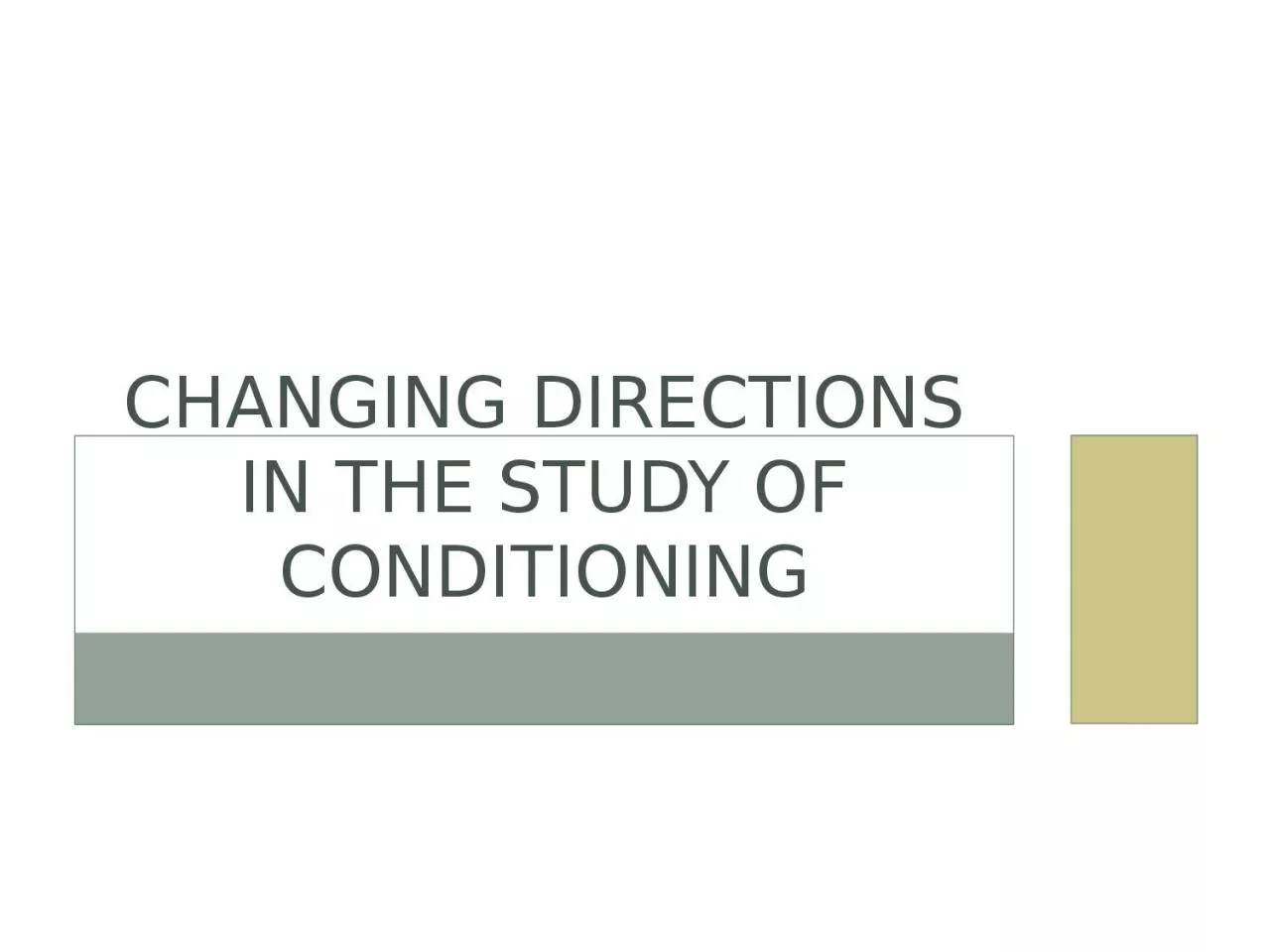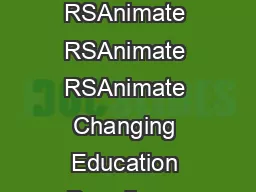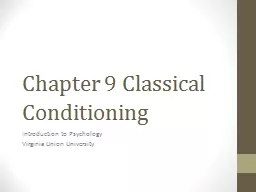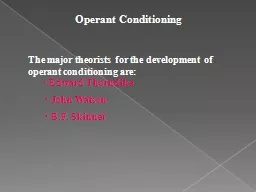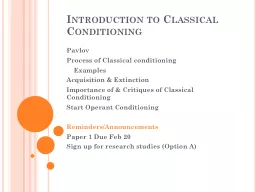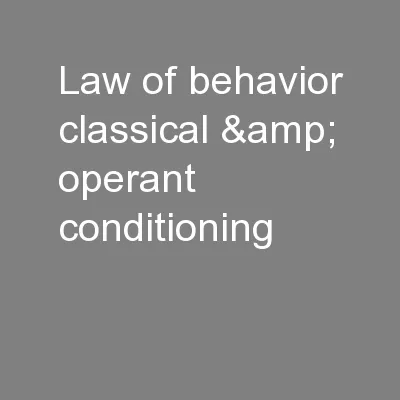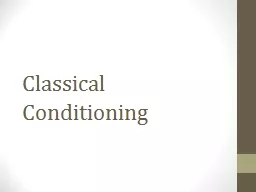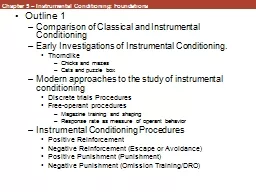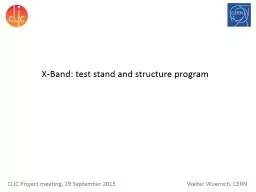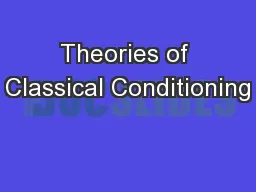PPT-CHANGING DIRECTIONS IN THE STUDY OF CONDITIONING
Author : riley | Published Date : 2024-02-03
RECOGNIZING BIOLOGICAL CONSTRAINTS ON CONDITIONING Instinctive drift occurs when an animals innate response tendencies interfere with conditioning processes Brelands
Presentation Embed Code
Download Presentation
Download Presentation The PPT/PDF document "CHANGING DIRECTIONS IN THE STUDY OF COND..." is the property of its rightful owner. Permission is granted to download and print the materials on this website for personal, non-commercial use only, and to display it on your personal computer provided you do not modify the materials and that you retain all copyright notices contained in the materials. By downloading content from our website, you accept the terms of this agreement.
CHANGING DIRECTIONS IN THE STUDY OF CONDITIONING: Transcript
Download Rules Of Document
"CHANGING DIRECTIONS IN THE STUDY OF CONDITIONING"The content belongs to its owner. You may download and print it for personal use, without modification, and keep all copyright notices. By downloading, you agree to these terms.
Related Documents

